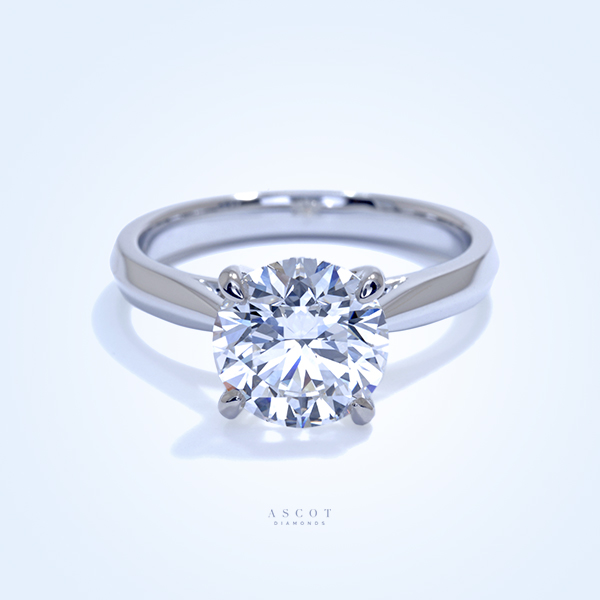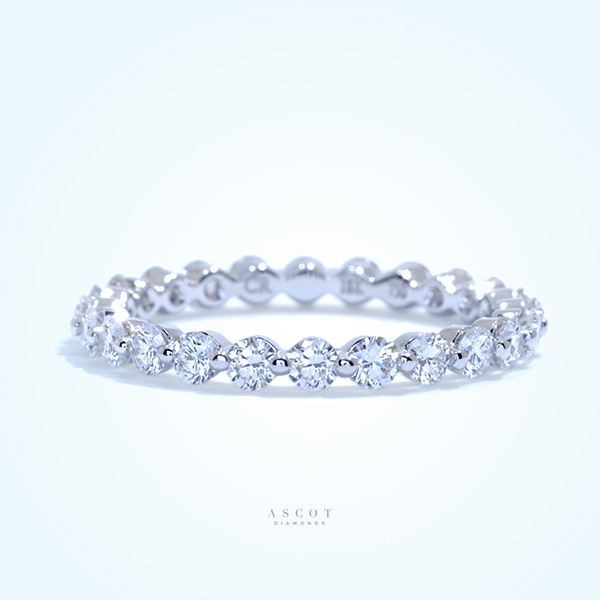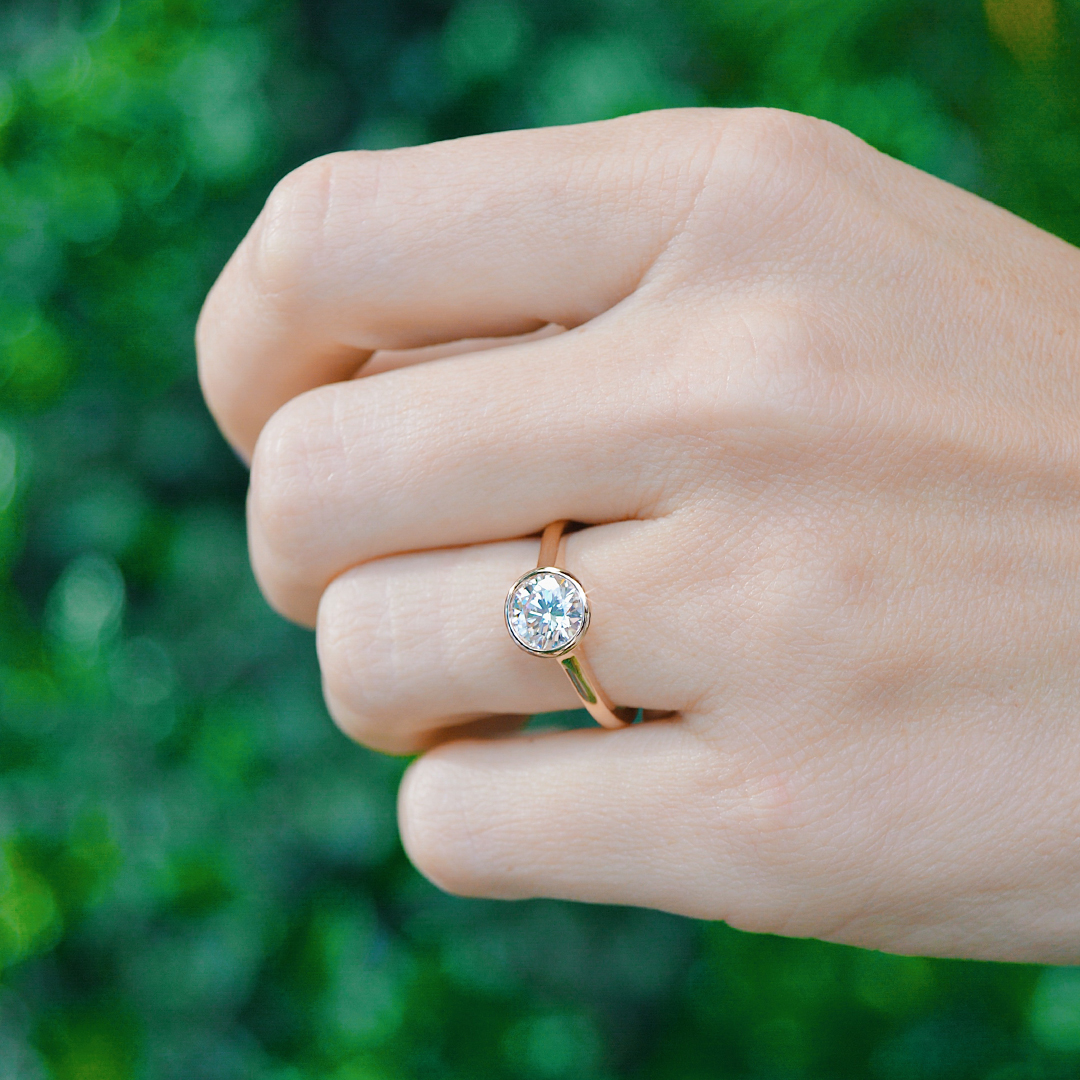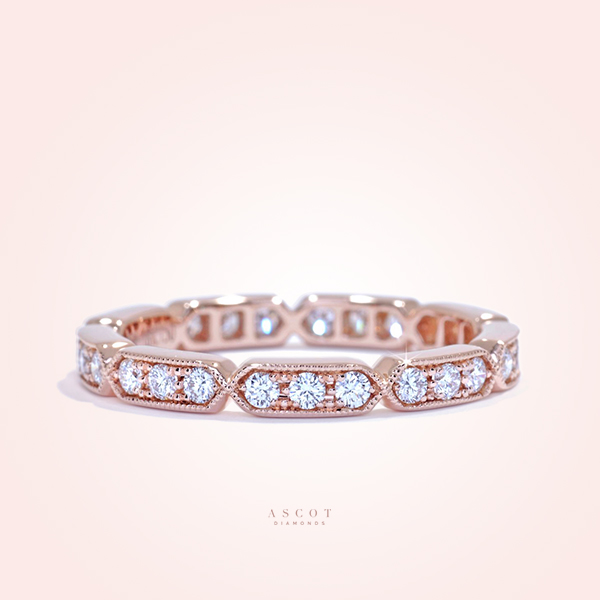What is Rhodium Plating
What Exactly is Rhodium Anyway?
Rhodium is one of the rarest metals on earth, which also makes it one of the most expensive. It is an extremely durable element that has a gorgeous pure silver-white color that is highly reflective. Think shiny like chrome but lighter in color. It belongs to a family of noble metals on the periodic table that also include platinum and palladium. In general, noble metals are resistant to corrosion and oxidation and have historically been used in jewelry because they can withstand wear and tear for generations.
So if rhodium is so bright, shiny and durable why not make a ring out of pure rhodium you might ask? Aside from the additional cost, rhodium also has a higher melting point than gold and platinum and is not easily molded into shapes. It would be nearly impossible to make a ring, not to mention set a diamond into the ring.
I Understand What Rhodium is, But What is Rhodium Plating?
Plating with rhodium, or having your rings “dipped” are all just fancy terms for the process that coats a thin layer of rhodium over silver, platinum and most often white gold. The results increase durability and shine.
So Why Plate My Ring? Isn’t White Gold Already White?
So glad you asked! When 24 karat gold comes out of the earth it is a saturated yellow orange color that is very soft. For gold to have strength and durability it needs to be alloyed (or mixed) with other metals, especially if it will be worn on the hand. Common alloys are copper, nickel, zinc, silver, platinum and palladium.
In addition to strengthening the metal, these alloys also create the different colors of gold.
Rose gold is certainly at the top of the trends right now, but have you ever wondered how gold comes out of the ground that color? The answer is it doesn’t. 24k yellow gold is alloyed with copper and silver to give it that beautiful pink color! In the same way white gold has been alloyed with silver, zinc and other white metals to make it whiter in color. It is impossible to completely eradicate the yellow tones though without decreasing the gold content to nearly nothing. This is where rhodium plating comes in. When you plate the ring you are adding a scratch resistant finish with a gorgeous reflective luster, covering up any trace of yellow!
Are There Different Thicknesses of Plating?
The ideal thickness for rhodium plating on a ring is 0.75 to 1.50 microns. Just for reference a human hair is about 100 microns! If the plating is too thin it can cause discoloration and tarnishing on the ring, and will wear off in just a few months time. On the contrary if the plating is too thick it will increase the chances that the rhodium will become unstable and brittle. This is why it is essential to leave your ring in the care of a reputable and experienced jeweler.
How Long Will the Plating Last?
Rhodium plating is not a permanent procedure and will slowly wear away over time. Going back to the previous paragraph, the timing of this erosion depends heavily on how often the piece of jewelry is worn and how thick the initial plating was. For instance a pair of earrings that are not exposed to everyday wear and tear may retain their finish for many years. However, a wedding band that is worn daily may need to be re-plated once every 1-2 years.
Is Rhodium Plating Affordable?
A quality plating from a reputable and experienced jeweler can run anywhere from $55 to $130 depending on the thickness and size of the ring.
Here at Ascot Diamonds we include this as a complimentary service for any item purchased from us for the lifetime of the ring.




